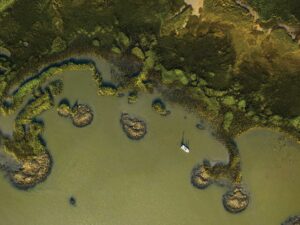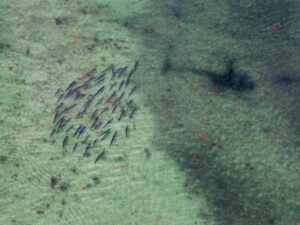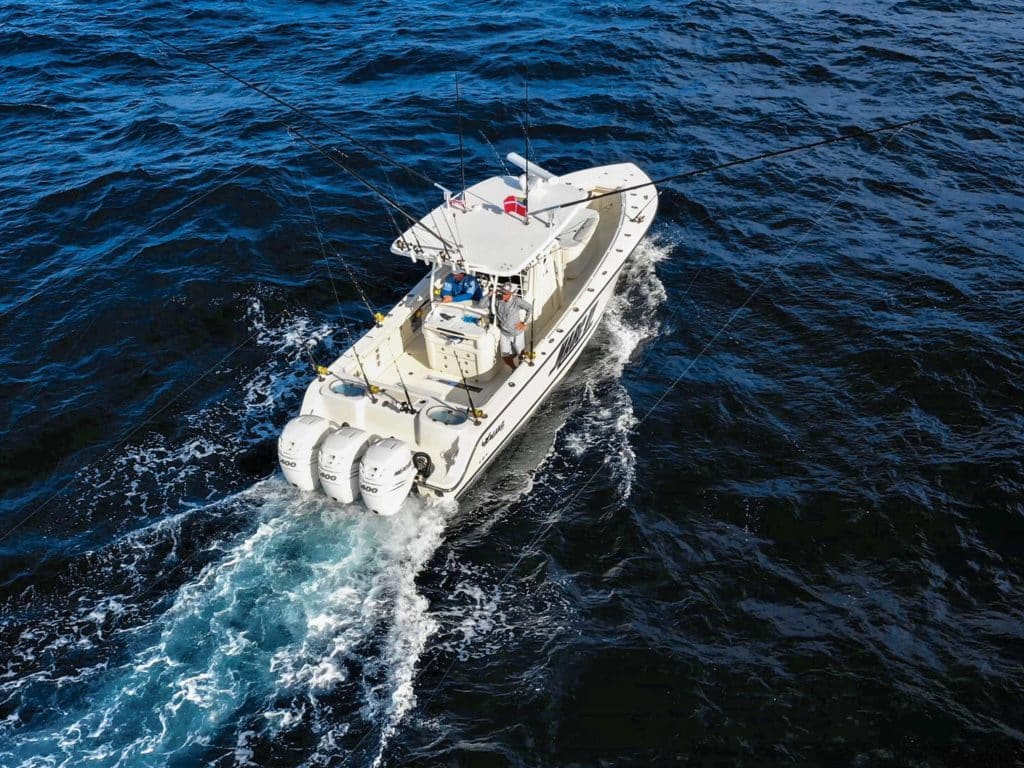
We were trolling large baits over canyonlike bottom off Abaco, the Bahamas, some 30 miles behind the Green Turtle Club, when birds began gathering in the distance. We anticipated a dolphin ambush, but instead of electric blues, yellows and greens, I spotted streaks of turquoise under the birds—white marlin!
After a couple of unsuccessful passes, the whites and birds disappeared. I should have deployed small ballyhoo versus dragging baits intended for blue marlin. If we encountered a similar situation again, we’d be ready with 20-pound-class spin tackle and ballyhoo. Fortunately, lightning was about to strike twice.
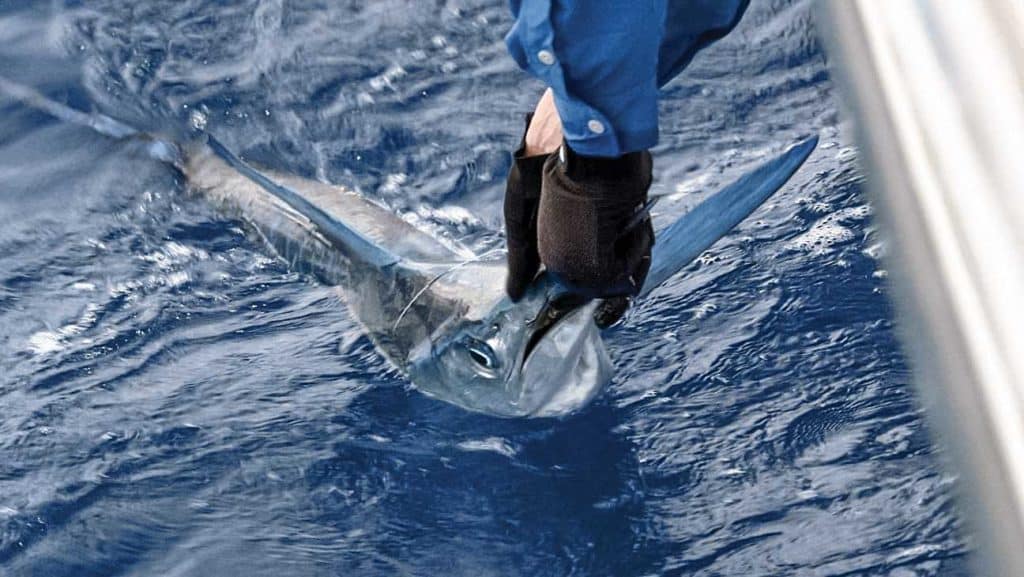
Later that day, we found more birds. This time, we grabbed the spinners and maneuvered ahead of the fish. I instructed Carl Grassi to free-spool a ballyhoo a couple hundred feet back, lift the rod high, and hold the line in place with his finger, with the bail open. A white raced in from the side and engulfed Grassi’s bait, and shortly I billed and released one of his bucket-list fish.
We ended our trip after going two for three on white marlin, clobbering big dolphin, and crushing the muttons and grouper on the reefs behind the Green Turtle Club.
The Abacos
Green Turtle Cay has been a decades-long favorite destination of mine. I’ve flats-fished here with the legendary Ronnie Sawyer, scoring bonefish as heavy as 8 pounds, and even a 15-pound mutton snapper on 8-pound tackle in 2 feet of water.
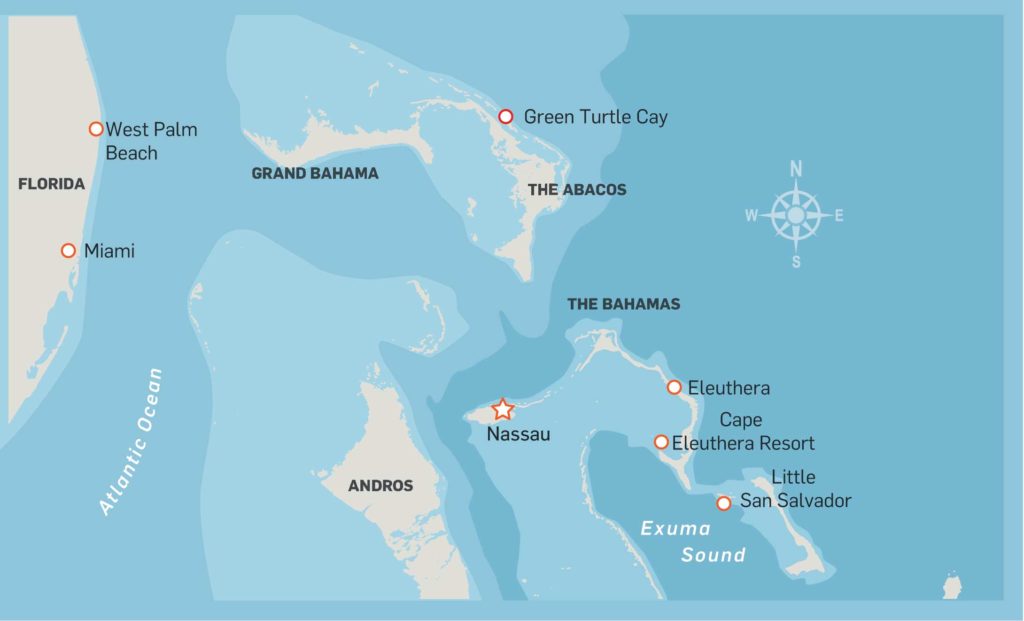
Offshore fishing can be spectacular, with some of the largest dolphin and blue marlin migrating past the outer cays. As for the Abaco reefs, we’ve taken black grouper up to 68½ pounds, and both the mutton bite and yellowtailing can be excellent.
Abaco fever inspired Grassi and me to once again make a 180-mile crossing from Palm Beach Inlet to the Green Turtle Club in May, between the peak dolphin (March and April) and blue marlin (June) runs.
Our June trip a few years ago yielded dolphin, a blue marlin and productive reef fishing. Our more recent May outing produced white marlin, big dolphin and hefty bottomfish.
Disaster Strikes
Little did we know that four months later, the northern Bahamas would suffer unprecedented devastation from Hurricane Dorian. The eastern Abacos were hardest hit, though the entire chain experienced varying levels of destruction.
However, this isn’t about the storm, but rather the Abaco spirit and fishing outlook. Destinations have been reopening, eager to welcome back fishermen and boaters. As of this writing, the Green Turtle Club is set for a full reopening on March 1.
“Our water has been restored, and Green Turtle has an entirely new power grid,” says Sarah Ann Showell, who heads up the club. “Our marina is open. For those choosing to leave their boats home, our guides will be ready to go come spring; that includes Ronnie Sawyer, and the flats fishing, reef fishing and dive boats. Even some of the local businesses in town are beginning to reopen.”
Down South, Y’all
Ironically, my Bahamas adventures in 2019 took us to extremes. After May’s Green Turtle trip at the northern end, Harry Vernon and I made a June run to Cape Eleuthera Resort and Marina, on Eleuthera’s southern tip. From Miami’s Haulover Inlet, it’s a 252-mile, one-way crossing.
A deepwater marina frequented by mega-yachts, Cape Eleuthera Resort and Marina sits in the quieter area of the Bahamas, a long way from South Florida. Fishing pressure is minimal. This became evident as we exited Yellow Bank and entered Exuma Sound. Flocks of birds appeared on the radar, and we caught dolphin under each one.
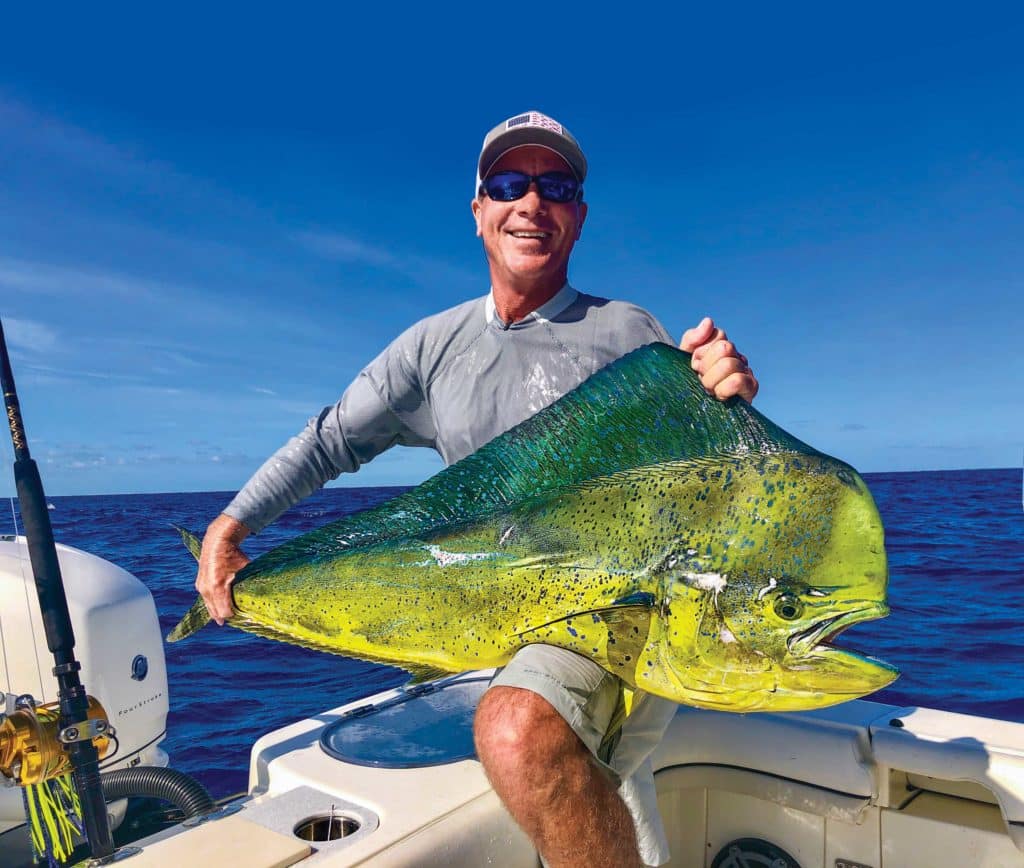
A half-mile from Cape Eleuthera Resort and Marina, the bottom drops into the abyss. With a southeast wind, bait pushes tight along this drop. Looking for marlin, Vernon and I trolled. We never saw a blue, but we caught dolphin every time we neared birds. We even fished the deep, erratic bottom along the Bridge, a shallow coral ridge joining the tip of Cape Eleuthera to Little San Salvador.
Tails by the Pails
Vernon and I remember the shoals of yellowtails we raised during our previous visit; they spanned 100 or more feet behind the boat, with close fish nibbling chum from our mesh bag. The catching was so easy, we made things more challenging by drifting bare hooks and casting large bucktails far back into the school, and we still caught plenty.
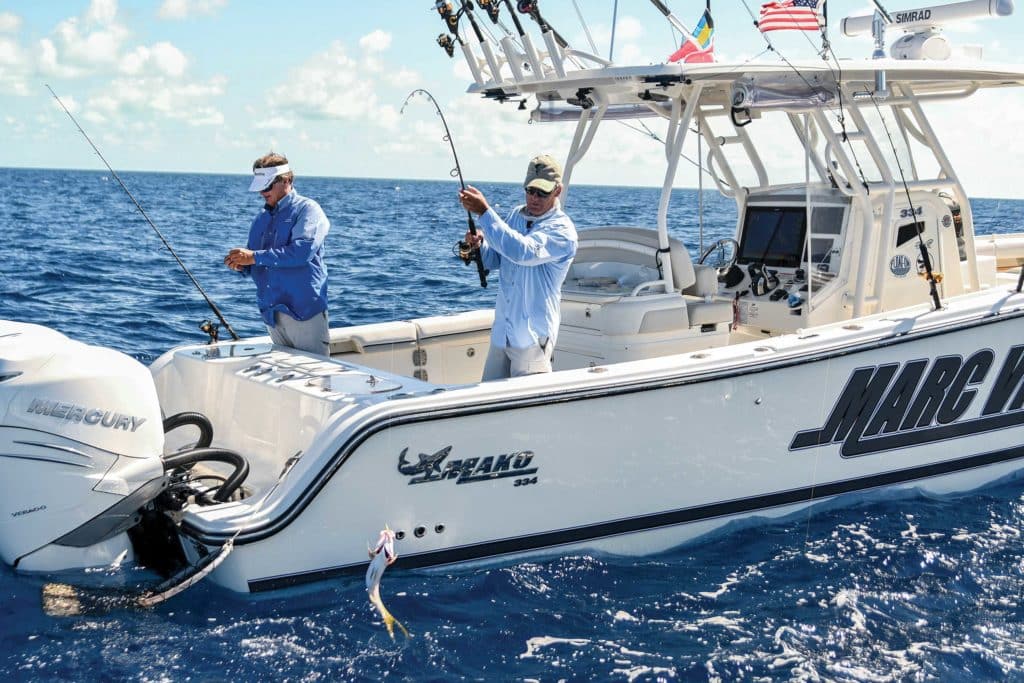
We doubted such craziness would occur again on this trip. After all, people were bound to discover and hammer this spot. Upon our approach, we watched our sonar, noting structure and some life. We found a good piece of bottom, factored in wind and current, and anchored.
We chummed heavily to no avail. About the time we were convinced this spot had been beaten down, some yellow appeared, and then some more.
Then it was like we’d never pulled anchor from our last visit. The ’tails—all flags—rose in bunches and fed like piranhas. It didn’t take long to box our limit.
The North Star
Back up Green Turtle way, an effective means of bottomfishing along the Abaco reefs is to drop a ballyhoo impaled on a deep jig and hold it near bottom while drifting between 70 and 200 feet deep.
Flutter jigging earns its share of action, along with specialized mutton rigs with 40 feet of 40-pound fluoro leader, baited with ballyhoo, goggle-eye chunks, whole squid or live pilchards.
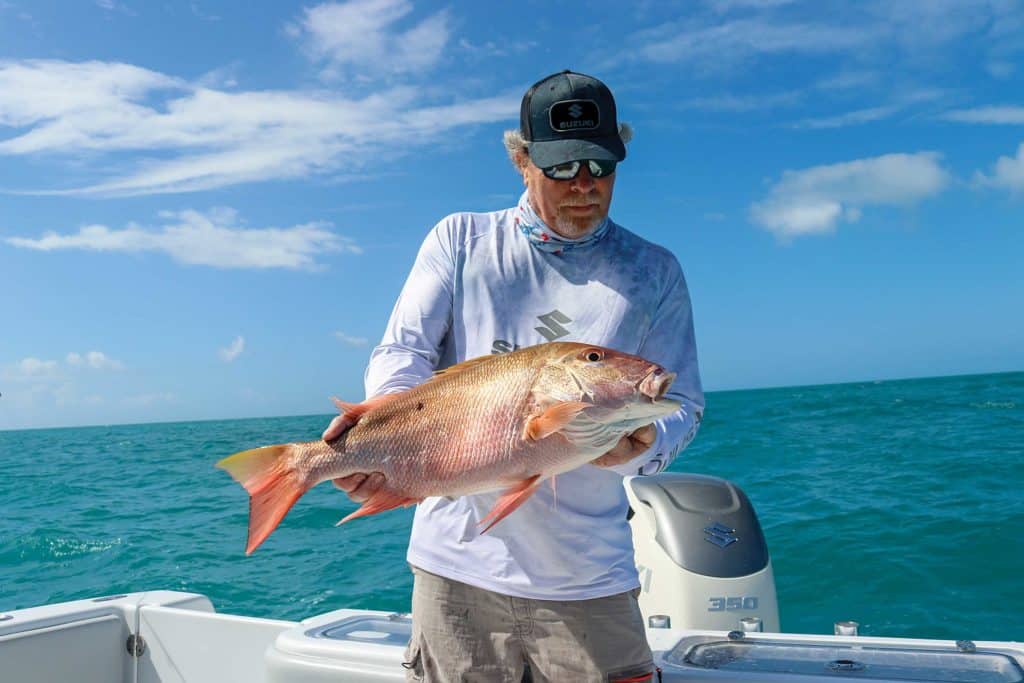
For larger live baits intended for grouper, opt for 8 to 10 feet of 80- or 100-pound fluoro leader, and an egg sinker riding on the line, above the barrel swivel connecting the leader.
For smaller bottom baits intended for strawberry grouper and yellowtails, downsize to 30-pound fluorocarbon and an egg sinker just heavy enough to reach the bottom.
Positioning a bait or two in the midwater column might attract sailfish, big king mackerel, grouper or muttons.
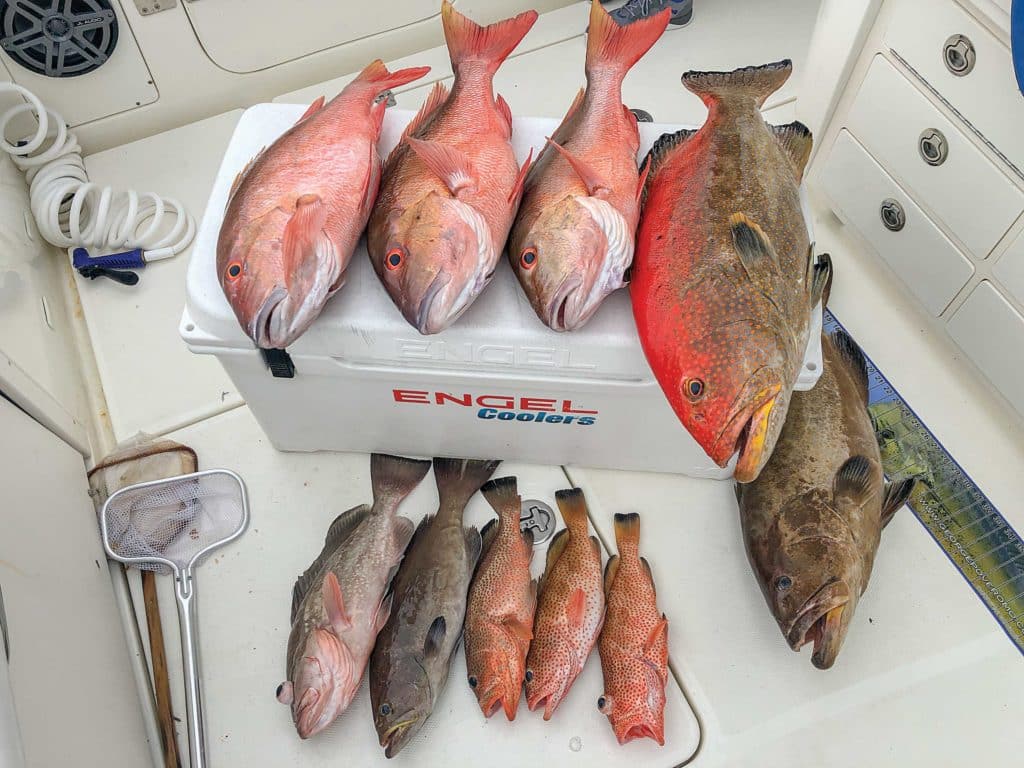
Grassi and I employed all of these tactics while drifting behind the Green Turtle Club, and caught large black and yellowfin groupers, red and strawberry groupers, muttons, mangroves and yellowtails, a scamp, and the usual barracuda or two.
What Are You Waiting For?
If there’s a silver lining to the devastation in the northern Bahamas, it will prove to be the fishing. Populations of fish have been left unpressured for nearly a year. Reef fishing in particular should be exceptional.
If your fishing plans include the Bahamas, seriously consider its northern islands, yet don’t forget about the destinations throughout its mid- and southern reaches. They all could use our support—and you’ll likely be rewarded with some excellent fishing.



